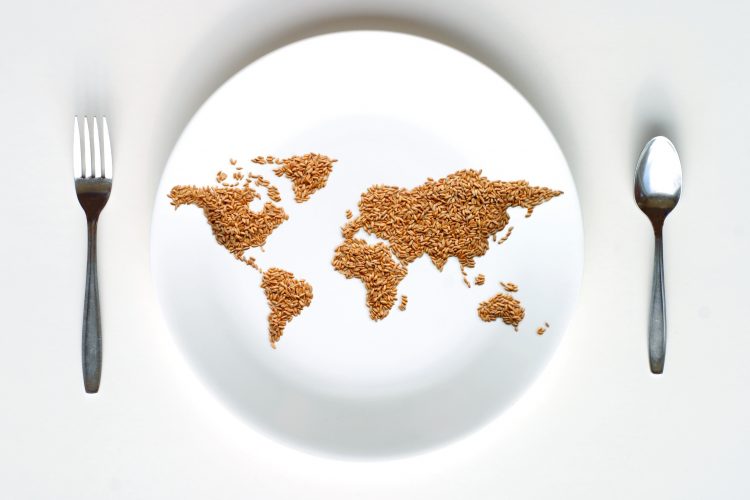War on Ukraine has exacerbated existing food crisis
- Like
- Digg
- Del
- Tumblr
- VKontakte
- Buffer
- Love This
- Odnoklassniki
- Meneame
- Blogger
- Amazon
- Yahoo Mail
- Gmail
- AOL
- Newsvine
- HackerNews
- Evernote
- MySpace
- Mail.ru
- Viadeo
- Line
- Comments
- Yummly
- SMS
- Viber
- Telegram
- Subscribe
- Skype
- Facebook Messenger
- Kakao
- LiveJournal
- Yammer
- Edgar
- Fintel
- Mix
- Instapaper
- Copy Link
Posted: 22 April 2022 | | No comments yet
The conflict in Ukraine and the COVID-19 pandemic are creating a global health and nutrition crisis for millions of women and children, according to a new analysis.


A new analysis published in the scientific journal Nature by global nutrition leaders, reveals that the war against Ukraine threatens to “increase the number of malnourished people who have already suffered from reduced diets and health systems support due to COVID-19”.
Global events are affecting women and children in particular, according to the study, which states that “urgent action is needed” due to the speed at which the crisis is impacting food and nutrition security.
In their analysis of this pressing situation, global nutrition leaders from Standing Together for Nutrition (ST4N) and the Scaling Up Nutrition (SUN) Movement called for immediate actions to address a potential malnutrition crisis in millions of vulnerable mothers and children worldwide.
They urge governments across the globe to take immediate action to “reduce unnecessary trade restrictions and domestic hoarding to allow greater accessibility of essential nutritious foods” and “protect the most vulnerable with safety net programmes such as food vouchers aiming at improving nutrition”. In addition to this, the groups call on governments to “protect national nutrition budgets and continue to provide essential nutrition support, including essential nutrition services for women and children”, honour their financing commitments to nutrition and not reallocate budgets, and invest in more “robust data monitoring systems to better target interventions” and more resources for humanitarian assistance to address both rising hunger and malnutrition.
“This food price crisis does not happen in isolation,” said Dr Saskia Osendarp, lead author and Executive Director of the Micronutrient Forum. “It comes after two years of households and governments trying to cope with the shocks caused by the COVID-19 pandemic, climate change related events, and other conflicts. We cannot afford to lose an entire generation of children due to the consequences of malnutrition, and we don’t have to, if we act now.”
The report adds that urgent and longer-term investments are needed as well to improve the availability and affordability of nutrient-rich foods, including assistance to “improve diverse and nutritious food” like milk, eggs, legumes, fruits and vegetables.
The authors state that preventing food waste by reducing food losses is also key, adding that the World Food Programme (WFP), UNICEF and other NGO partners have the resources they need to support immediate responses in the most at-risk countries.
“Given the enormous consequences of adverse exposures in pregnancy and early infancy, some of the consequences of the Ukraine conflict on women and young children affected by the conflict and its global fall out, will be felt for years to come; impacts on foetal growth, perinatal and early childhood nutrition can likely have long-term consequences for health and human development far outweighing anything currently visible,” said Dr Zulfiqar Bhutta, Co-Director at the Centre for Global Child Health, The Hospital for Sick Children in Canada and a co-author of the report.
The report highlights that Russia and Ukraine are among the world’s largest producers of wheat, fertiliser, and fuel. Even before the Russian invasion, global food prices were at an all-time high, but the war against Ukraine has further increased the prices of all commodities – between February and March 2022 they rose by 12.6 percent. After nearly two months of conflict, wheat commodity prices have increased by 19.7 percent, according to the researchers, making foods unaffordable and inaccessible to the world’s most vulnerable populations and increasing acute levels of hunger.
Poorer households cope against rising food costs by shifting to less costly and less nutrient-dense foods as they are priced out of healthy diets – placing them at risk for life-threatening forms of malnutrition, including wasting, stunting and micronutrient deficiencies, the report highlights. It adds that vulnerable mothers over the past two years faced “a triple challenge of food insecurity, disrupted health systems, and income losses due to the global COVID-19 pandemic”. The World Bank conservatively estimated that the pandemic led to 97 million more people thrown into poverty in 2020.
“Developing countries are now facing tough decisions as they battle multiple crises including the continuing COVID-19 pandemic and rising food and fuel costs – while at the same time they are forced to cut further into their national budget to pay back foreign debts,” said Gerda Verburg, United Nations Assistant Secretary-General and Coordinator of the SUN Movement. “It is crucial that the global community immediately step up with mechanisms like debt swap options for countries to transfer their debt and apply the funds to investments in nutrition and food systems.”
The analysis calls for comradery between global communities to safeguard the nutritional well-being of vulnerable women and children, including their access to nutrition services and safe, nutritious foods. It reassures that “it is not too late to rescue a generation of children from the devastating impacts of malnutrition” but warns with every passing day of delay, countless more will face “diminished futures”.
Related topics
Related organisations
Scaling Up Nutrition (SUN), Standing Together for Nutrition, UNICEF, United Nations Food and Agriculture Organization, World Food Programme









